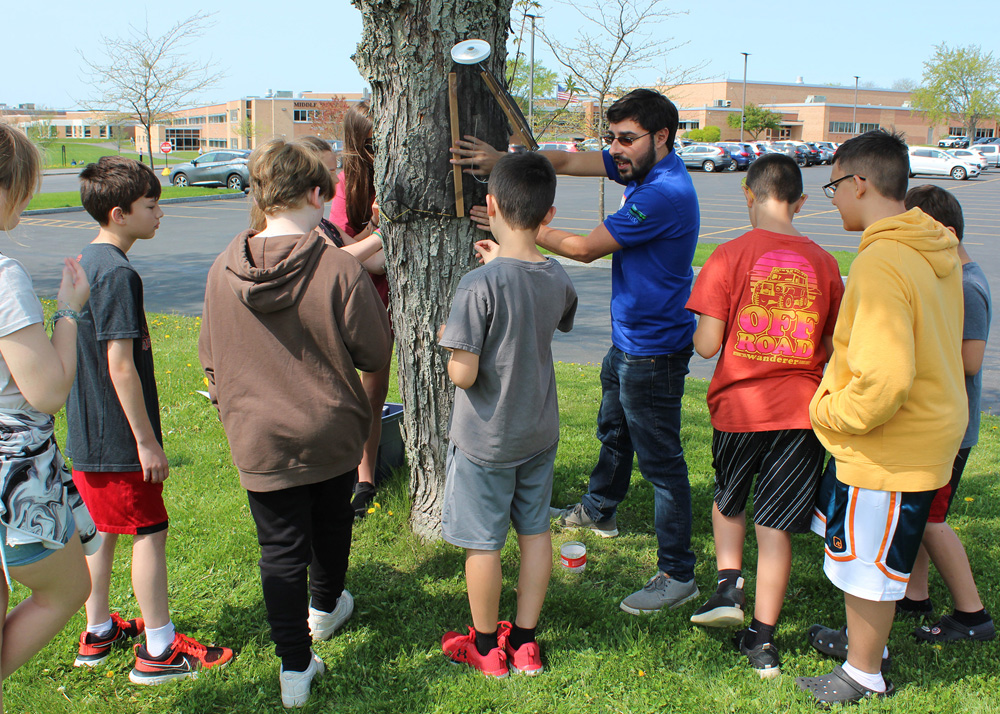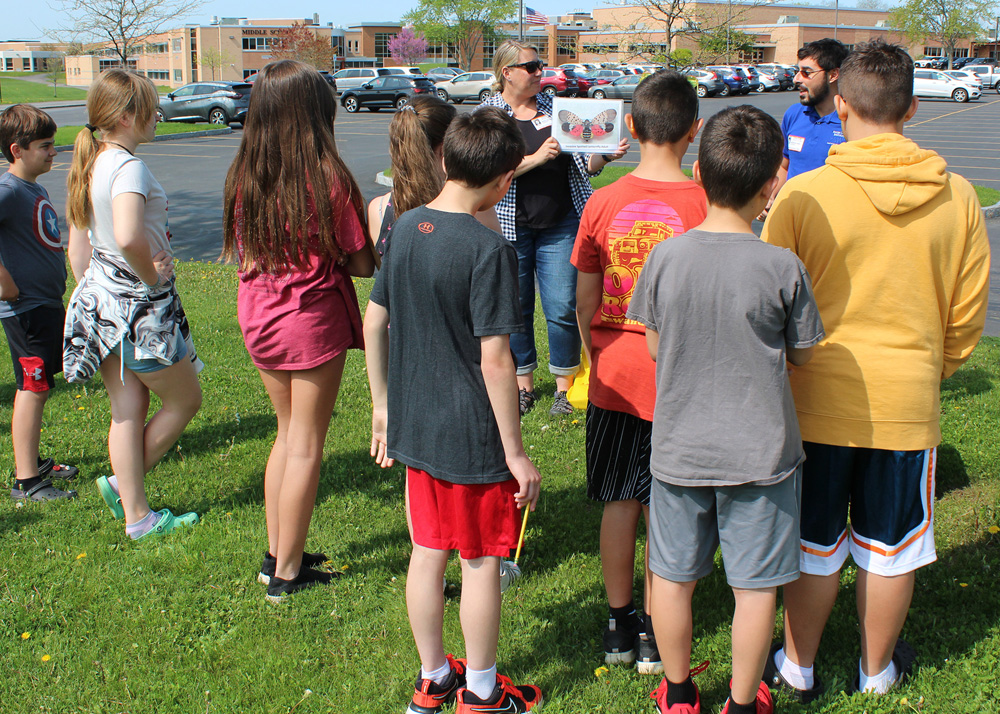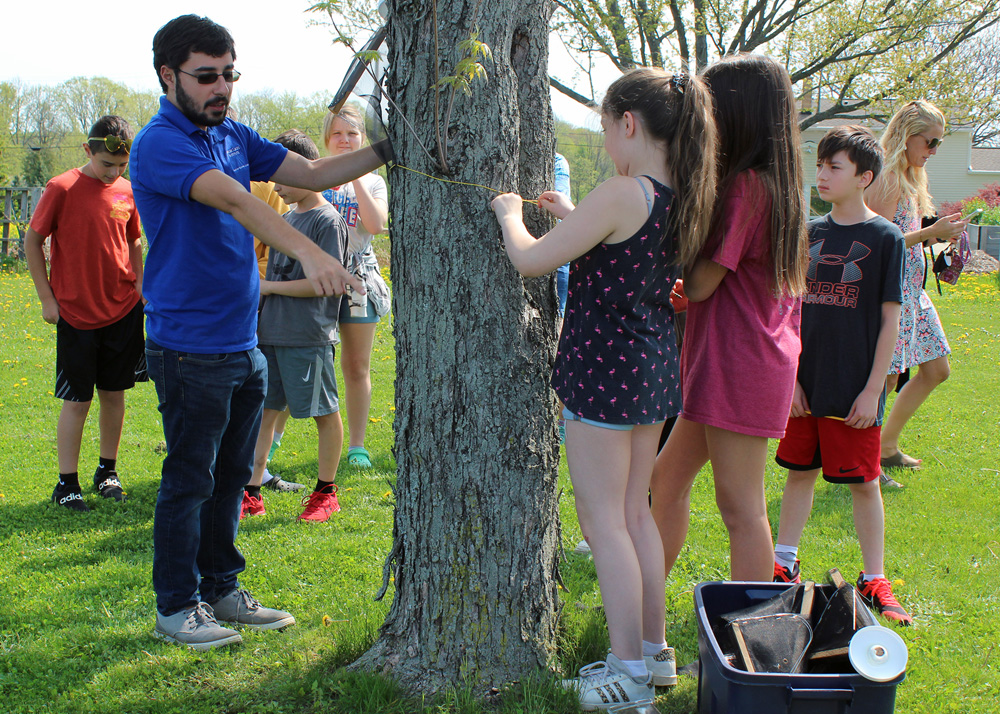On the lookout for invasive species at Churchville-Chili Middle School

Spotted lanternflies aren’t welcome at Churchville-Chili Middle School, where sixth graders are prepared to identify the invasive insects and stop them in their tracks. Experts from the Finger Lakes Partnership for Regional Invasive Species Management (FL-PRISM) visited the school’s enrichment classes in May to introduce students to the latest threat to our local environment, the spotted lanternfly (SLF). The non-native bug, first detected in Pennsylvania, has now been found as close as Ithaca. It feeds on many plants, including maple and walnut trees, fruit trees, and grapevines. FL-PRISM Associate Director of Educational Programs Nadia Harvieux and Terrestrial Program Outreach Coordinator Matthew Gallo were happy to train students to become the insects’ worst nightmare – enthusiastic volunteers ready to stop the spread.
Early detection and rapid response are critical to controlling invasives like the spotted lanternfly, and educated citizens are the best defense. Prior to the visit, students first learned how to identify the SLF, creating models complete with the insect’s distinctive spotted red and pink wings.
After a quick classroom presentation by visitors, teachers Patti Saucke, Shannon Barton, and Andrea Lynch guided the group to the school’s outdoor vegetable and flower garden, the Garden of the Saints. There, students asked more questions about the SLF’s lifecycle, and how it feeds (it sucks out essential plant fluids), and whether it bites or stings (no). They learned that any SLF egg masses or insects should be photographed, reported, and then destroyed.
With the help of the students, Harvieux and Gallo identified several vulnerable maple trees between the garden and the school’s parking lot. They explained that spotted lanternflies often lay eggs on automobiles, making it easy for them to hitch a ride and expand their range quickly. Class members assisted Gallo in setting up traps on the trees to capture any SLF that might be in the area. Students and garden visitors will monitor the traps regularly.
Finger Lakes PRISM (http://fingerlakesinvasives.org) preserves the biodiversity of our natural communities through the prevention, detection, and control of invasive species. Housed within Hobart and William Smith Colleges’ Finger Lakes Institute (FLI), the program is one of eight across New York that focuses on managing invasive species, developing detection programs, employing response efforts, providing education programs and outreach, and working with communities. PRISM programs are administered through the New York State Department of Environmental Conservation.
Provided information and photos






